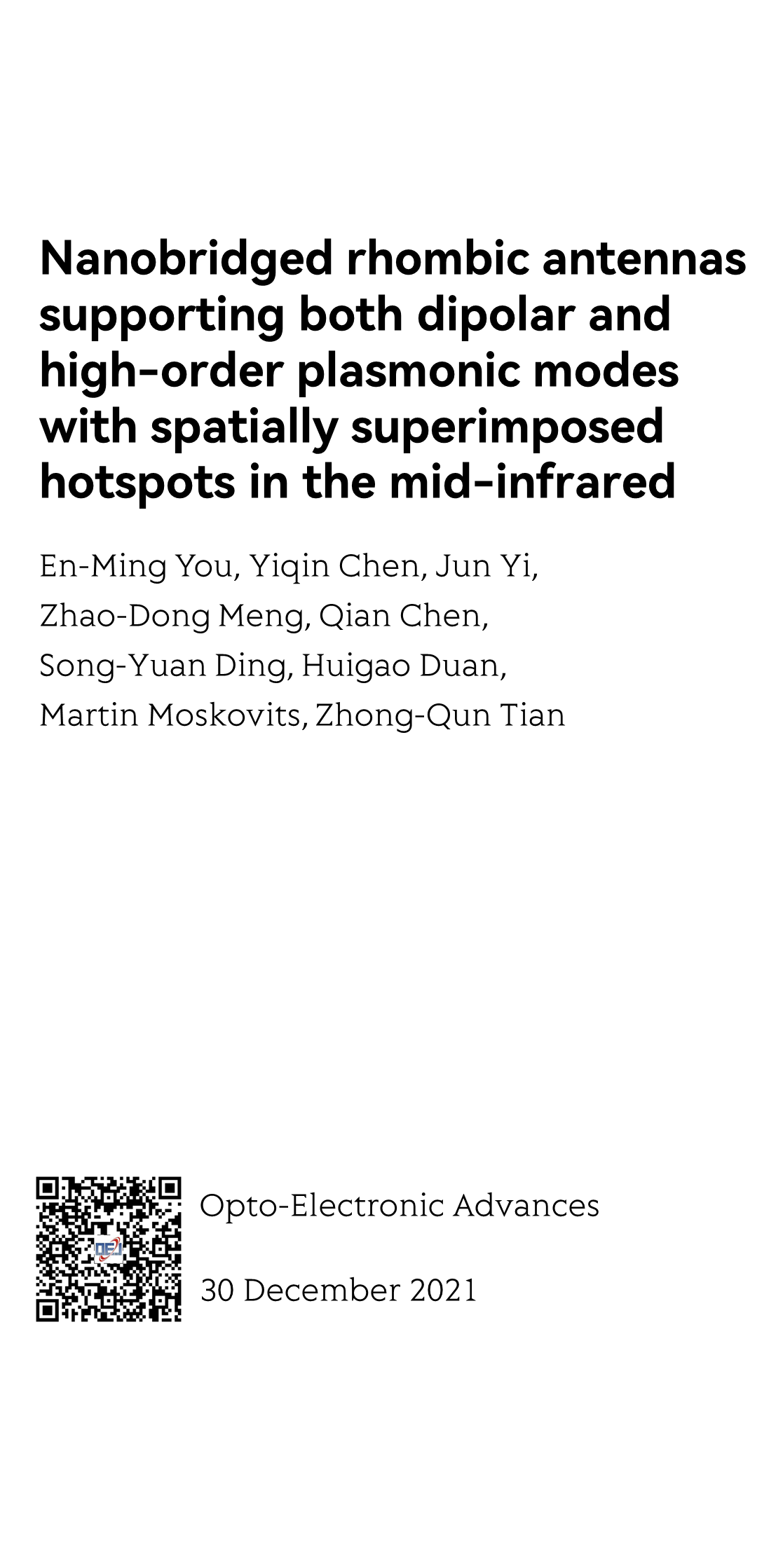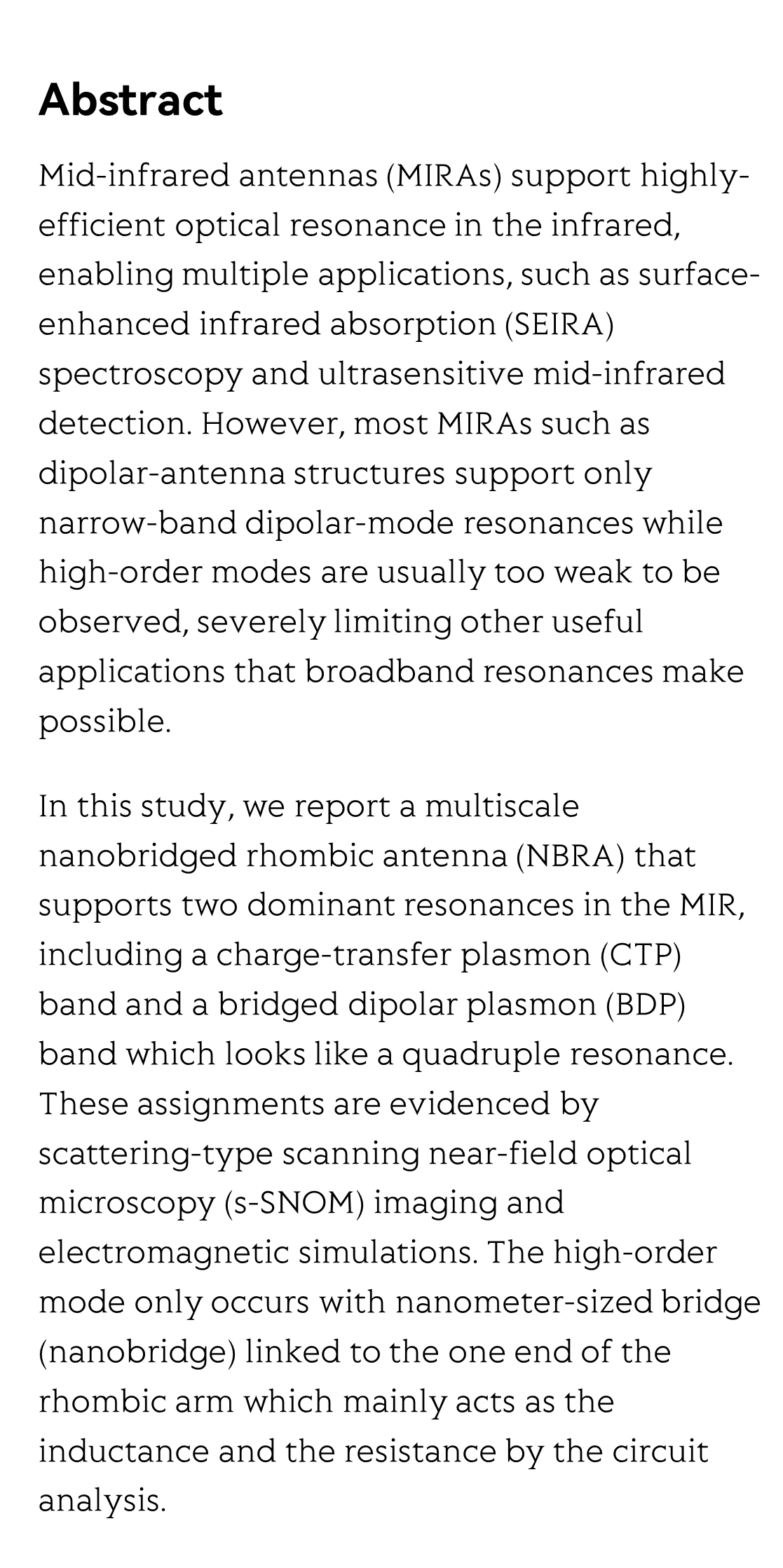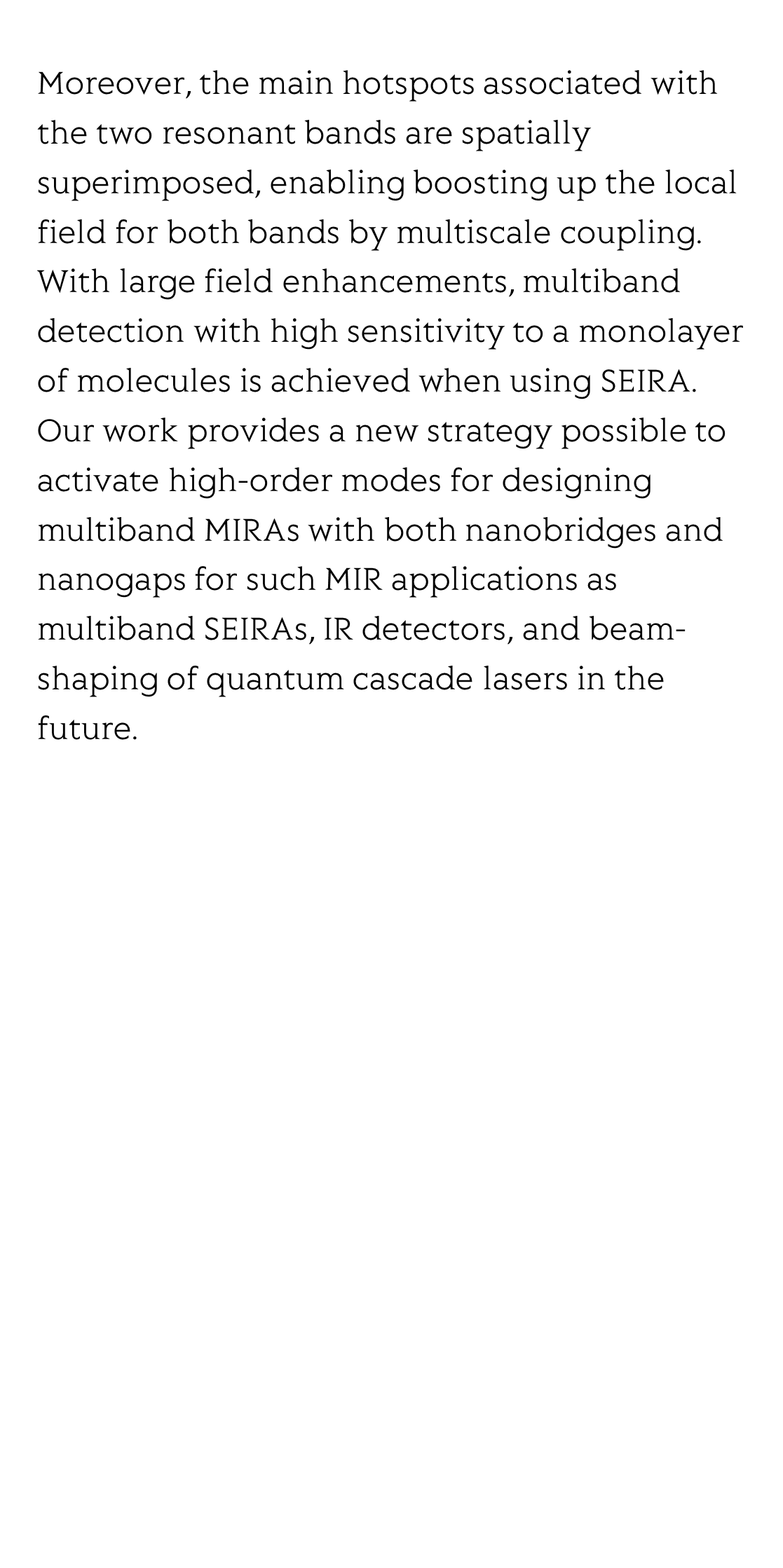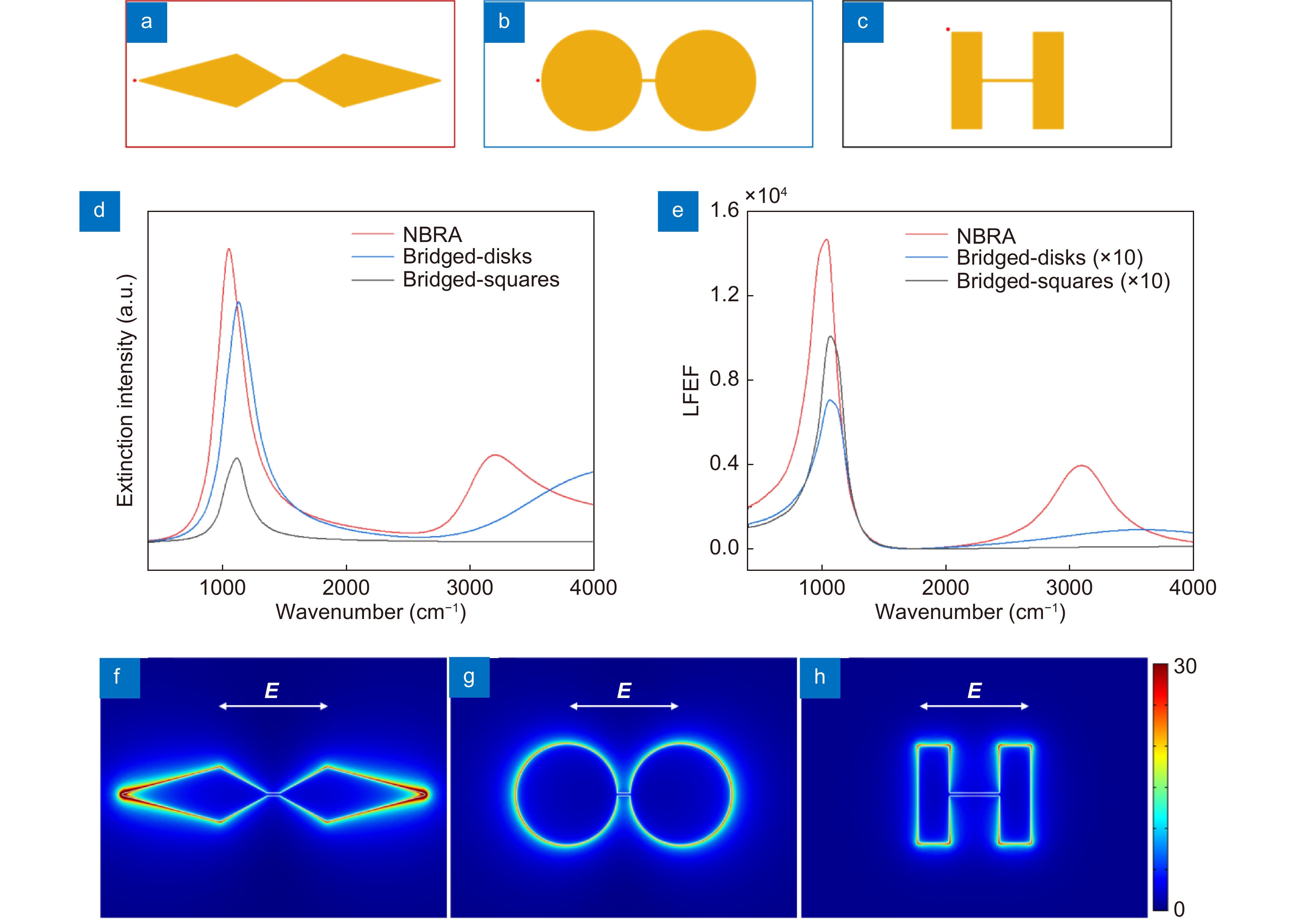(Peer-Reviewed) Nanobridged rhombic antennas supporting both dipolar and high-order plasmonic modes with spatially superimposed hotspots in the mid-infrared
En-Ming You 尤恩铭 ¹, Yiqin Chen 陈艺勤 ², Jun Yi 易骏 ¹, Zhao-Dong Meng ¹, Qian Chen ¹, Song-Yuan Ding 丁松园 ¹, Huigao Duan 段辉高 ², Martin Moskovits ³, Zhong-Qun Tian 田中群 ¹
¹ State Key Laboratory of Physical Chemistry of Solid Surfaces, Collaborative Innovation Center of Chemistry for Energy Materials, College of Chemistry and Chemical Engineering, Xiamen University, Xiamen 361005, China
中国 厦门 厦门大学化学化工学院 固体表面物理化学国家重点实验室 能源材料化学协同创新中心
² National Engineering Research Center for High Efficiency Grinding, College of Mechanical and Vehicle Engineering, Hunan University, Changsha 410082, China
湖南大学机械与运载工程学院 国家高效磨削工程技术研究中心
³ Department of Chemistry and Biochemistry, University of California, Santa Barbara, California, 93106, USA
Opto-Electronic Advances, 2021-12-30
Abstract
Mid-infrared antennas (MIRAs) support highly-efficient optical resonance in the infrared, enabling multiple applications, such as surface-enhanced infrared absorption (SEIRA) spectroscopy and ultrasensitive mid-infrared detection. However, most MIRAs such as dipolar-antenna structures support only narrow-band dipolar-mode resonances while high-order modes are usually too weak to be observed, severely limiting other useful applications that broadband resonances make possible.
In this study, we report a multiscale nanobridged rhombic antenna (NBRA) that supports two dominant resonances in the MIR, including a charge-transfer plasmon (CTP) band and a bridged dipolar plasmon (BDP) band which looks like a quadruple resonance. These assignments are evidenced by scattering-type scanning near-field optical microscopy (s-SNOM) imaging and electromagnetic simulations. The high-order mode only occurs with nanometer-sized bridge (nanobridge) linked to the one end of the rhombic arm which mainly acts as the inductance and the resistance by the circuit analysis.
Moreover, the main hotspots associated with the two resonant bands are spatially superimposed, enabling boosting up the local field for both bands by multiscale coupling. With large field enhancements, multiband detection with high sensitivity to a monolayer of molecules is achieved when using SEIRA. Our work provides a new strategy possible to activate high-order modes for designing multiband MIRAs with both nanobridges and nanogaps for such MIR applications as multiband SEIRAs, IR detectors, and beam-shaping of quantum cascade lasers in the future.
Flicker minimization in power-saving displays enabled by measurement of difference in flexoelectric coefficients and displacement-current in positive dielectric anisotropy liquid crystals
Junho Jung, HaYoung Jung, GyuRi Choi, HanByeol Park, Sun-Mi Park, Ki-Sun Kwon, Heui-Seok Jin, Dong-Jin Lee, Hoon Jeong, JeongKi Park, Byeong Koo Kim, Seung Hee Lee, MinSu Kim
Opto-Electronic Advances
2025-09-25
Dual-frequency angular-multiplexed fringe projection profilometry with deep learning: breaking hardware limits for ultra-high-speed 3D imaging
Wenwu Chen, Yifan Liu, Shijie Feng, Wei Yin, Jiaming Qian, Yixuan Li, Hang Zhang, Maciej Trusiak, Malgorzata Kujawinska, Qian Chen, Chao Zuo
Opto-Electronic Advances
2025-09-25







